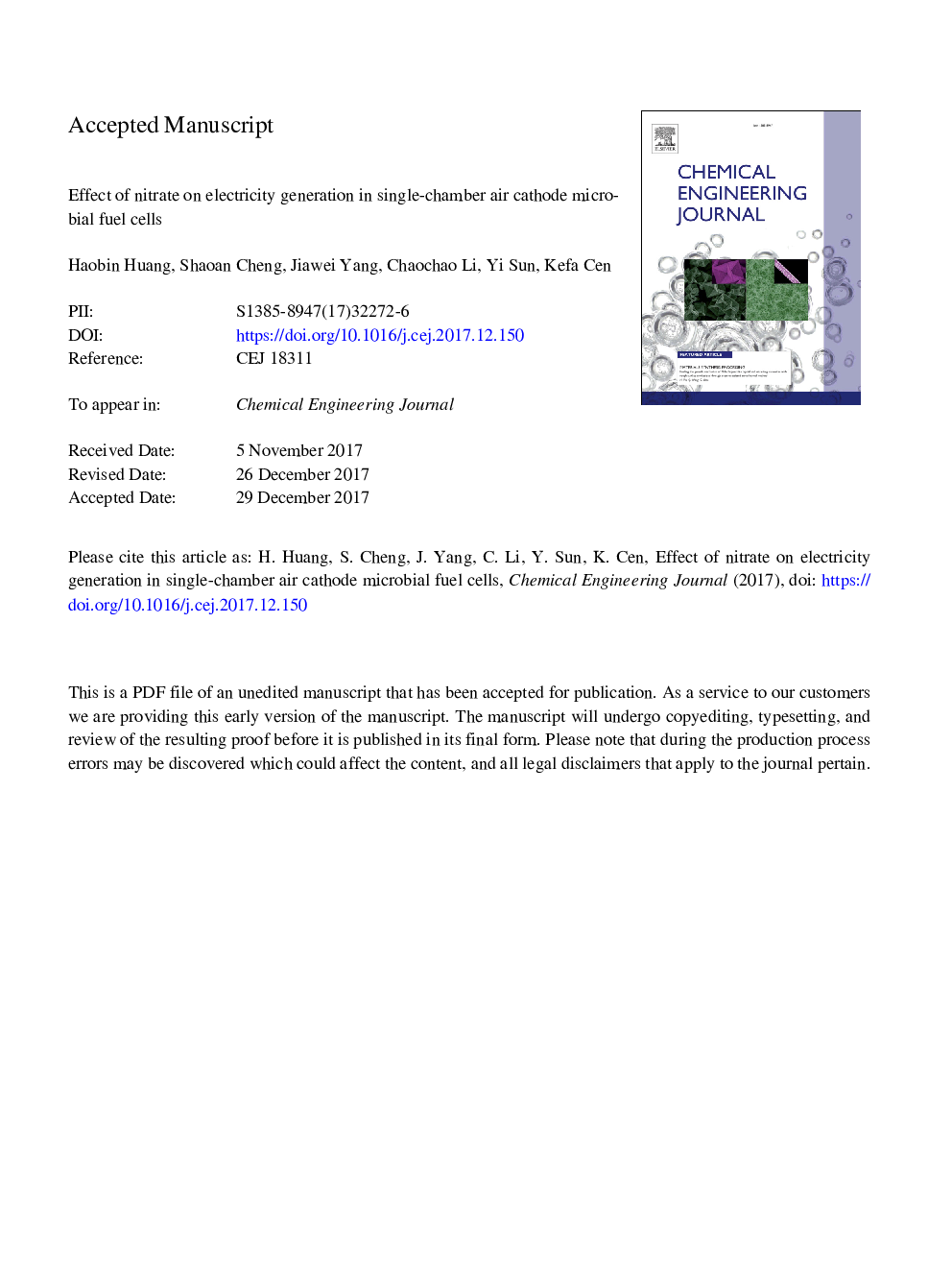| Article ID | Journal | Published Year | Pages | File Type |
|---|---|---|---|---|
| 6580478 | Chemical Engineering Journal | 2018 | 52 Pages |
Abstract
Microbial fuel cells (MFCs) have the potential for simultaneous electricity generation and nitrogen removal in the treatment of wastewater that contains nitrate, but the denitrification of nitrate might affect electricity generation in single-chamber MFCs. In this study, the effect of nitrate on electricity generation in single-chamber air cathode MFCs was investigated. The chemical oxygen demand (COD) was removed faster by denitrification (0.977â¯Â±â¯0.013â¯gâ¯CODâ¯gâ1 NO3â) than by electricity generation in the MFCs. When the concentration of COD that excluded the COD removed by denitrification was more than 300â¯mgâ¯O2â¯Lâ1, denitrification only resulted in the decrease in the voltage of the MFCs at the denitrification stage, but did not affect the stable voltage and maximum power density (MPD) of the MFCs after the denitrification stage. The average MPDs during the 660-day batch operation ranged from 27.4â¯Â±â¯0.9 to 28.4â¯Â±â¯1.2â¯Wâ¯mâ3. At the same concentration of COD that excluded the COD removed by denitrification, the coulombic efficiency of the MFCs after the denitrification process increased with an increasing initial concentration of nitrate, which was probably attributed to the inhibition of the activity of certain non-exoelectrogenic bacteria by nitrate. A microbial community analysis showed that Thauera was the dominant genus of denitrifying bacteria and Geobacter was the dominant genus of exoelectrogenic bacteria at the anodes of the MFCs. With an increase in the initial concentration of nitrate, the proportion of denitrifying bacteria increased, whereas the proportion of exoelectrogenic bacteria decreased.
Keywords
Related Topics
Physical Sciences and Engineering
Chemical Engineering
Chemical Engineering (General)
Authors
Haobin Huang, Shaoan Cheng, Jiawei Yang, Chaochao Li, Yi Sun, Kefa Cen,
